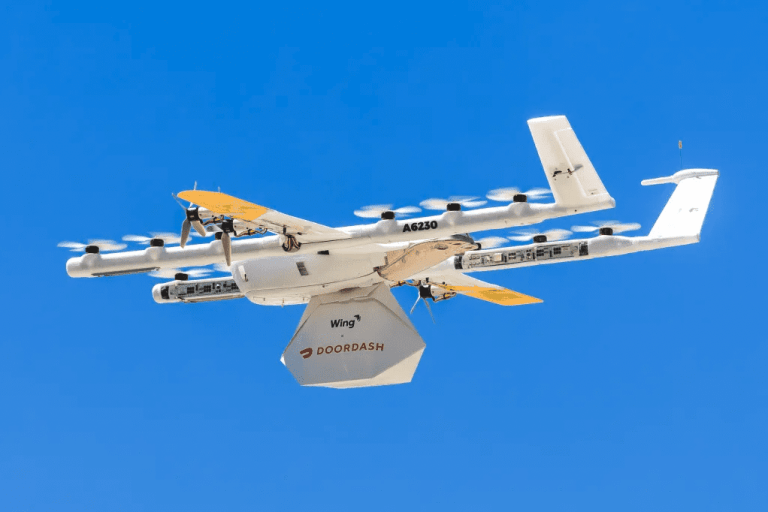DoorDash and Google’s Wing Launch Drone Delivery Pilot in Australia

Google is leveraging DoorDash to move into on-demand delivery.
The aggregator announced Tuesday (Nov. 8) that it is trying out automated drop-off via skyway in Australia in partnership with Google parent company Alphabet’s drone delivery subsidiary Wing. The two companies are pilot testing the program in select suburban parts of Queensland with additional areas to come.
“Drone delivery can provide an excellent complement to our ground delivery services,” Rebecca Burrows, DoorDash’s general manager of Australia, New Zealand, Canada, said in a statement. “Delivery drones create a quick, efficient delivery option for smaller orders weighing just over a kilo, and free up ground delivery services for larger deliveries that provide better compensation to drivers.”
Additionally, the companies made it clear in the announcement that the goals of this partnership are not limited to food delivery but rather include a range of daily essentials and possible last-minute purchases.
“Over the last few years, we’ve seen an acceleration of consumer demand for fast, contactless delivery options, and now people expect quicker, on-demand access to food, medicine and convenience items,” Wing Australia General Manager Simon Rossi said in a statement.
The partnership, however, brings up broader questions about the future of drone delivery in the aggregator industry. If the goal is to reduce the cost of delivery by removing the paid labor, it requires the technology needs to reach a point where it actually does cost less, given that each drone can only deliver one order, a significant constraint on efficiency.
Moreover, if the aggregator does have enough drones in the air to fulfill each order individually, it seems likely that consumers’ frustrations could compromise their relationships with the delivery service. Previous drone delivery tests across industries have drawn criticism for the noise they create.
“Cultural questions around privacy, noise and annoyance have hampered the expansion of flights,” a 2020 report from the World Economic Forum (WEF) stated.
Additionally, drone delivery is constrained by which kinds of foods can make the trip. So far, in the United States, tests of drone delivery have been centered on sturdy foods — cheesesteaks, other kinds of sandwiches, wings. Major pizza brands, meanwhile, have been trying out the technology in Israel and New Zealand. Yet more delicate foods may not fare quite so well during the airlift process.
However, the demand for convenient restaurant options is not going anywhere, and the unit economics of the model will have to be squared some way or another. Research from PYMNTS’ new study “Super Apps for the Super Connected,” created in collaboration with PayPal, which drew from a survey of more than 9,900 consumers across the U.S., the United Kingdom, Australia and Germany, found that the majority of consumers buy restaurant meals for pickup or delivery online. Seven in 10 millennials do so.
Drones are not the only automated solution that restaurants and aggregators are looking toward to reduce their delivery costs. While they try out delivery via skyway in suburban areas, some are also testing out sidewalk rovers to automate delivery in cities. Yet all these automated systems are far from replacing human drivers for now.
“I think there’s a really neat rover opportunity,” Brinker International Senior Vice President and Head of Innovation Wade Allen told PYMNTS in an April interview. “It’s a very efficient way to deliver stuff. I’m excited about that. … I could see a day in the far distant future that maybe these couriers and these delivery vehicles are [all] truly automated, but it is a long way away.”